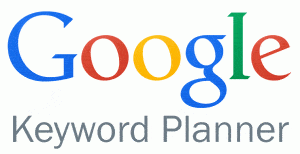Digital Marketing Strategy
How To Use Google Keyword Planner

If you’re just getting started with search engine marketing, keyword research is a fantastic place to start. The Google Keyword Planner tool is intended to assist marketers in locating relevant keywords and data. It may be used to calculate search volume, competitiveness, and ad cost for certain keywords.
Google’s Keyword Planner is a terrific place to start whether you’re already using Google Ads or want to start adding search ads into your marketing strategy. Read more as Mapletree Media uncovers everything you need to know.
Why Is It Important?

If you’re new to search engine marketing, you should know that keyword research is one of the most crucial phases in optimising your website for improved SERP performance. In order to find out what to rank for, keyword research is a critical activity in SEO. Moreover, it entails discovering common terms or phrases that are related to your brand or sector.
Additionally, keyword research allows you to learn more about the demand for specific keywords and how difficult it would be to compete for those terms in both organic and paid search results. Many companies begin by compiling a list of keywords that are pertinent to their industry.
As a result, once you’ve compiled your list, you’ll need to decide which keywords would perform best for your specific campaigns and web pages. As a consequence of conducting good keyword research, you should be able to develop relevant content that will assist drive traffic and conversions to your website.
What Can Google Keyword Planner Do?
Discover new keywords
When you’re looking for keywords to utilise in your campaign, you may use Keyword Planner to get ideas for similar terms. This is useful if you don’t know where to begin when it comes to identifying keywords for your sites.
The more general your original keywords are, the more recommendations you will get; nevertheless, being overly particular or too general is not suggested. For instance, you may start by entering a broad term like “cleansers” or “cleansers for dry skin”. Then, Keyword Planner will provide you with keyword insights as well as a list of related keywords.
Evaluate average monthly searches

Understanding the user and how they will search for your items is crucial to the success of your campaign and strategy. Knowing how frequently your industry’s keywords are searched is crucial to your campaign’s success. You don’t want to target keywords that no one searches for; however, you also don’t want to target terms with a lot of searches since they’re more competitive.
Discover keyword costs
Another essential factor to consider for your campaign is the cost of the keywords you want to target. Fortunately, Term Planner shows you the average cost of having your ad appear on searches for a keyword, making it easy to decide which keywords are ideal for your plan and budget.
Creating campaigns

Keyword Planner was designed to work with Google Ads; therefore, it makes it simple to develop new campaigns based on extensive keyword research. When you create a campaign, you may choose from a recommended budget or set your own bespoke daily budget depending on your specific needs.
Furthermore, you can access your campaign under the “Tools & Settings” button in Keyword Planner once it has been deployed. This makes it easy to examine your campaign from start to end in one location. To add, many companies want to connect their paid ad campaign and SEO strategy so that traffic for their best keywords may be optimised across both marketing tactics.
How To Use Google Keyword Planner
1. Setting up a Google Ads account
To start, Google Keyword Planner isn’t a paid service. You must, however, have a Google Ads account in order to utilise it. Take a few minutes to register a Google Ads account if you don’t already have one. Moreover, setting up a campaign shouldn’t be too difficult if you intend on using Keyword Planner for paid search advertisements; but, even if you don’t plan on using it for ads, Google still requires you to do so.
2. Find Keywords
Find keywords lets you enter keyword ideas and find comparable terms that can help you attract individuals who are interested in your products or services. Google will ask you to input words, phrases, or URLs that are relevant to your business.
As a result, it answers with both your submitted keywords and keyword recommendations. Each recommendation contains data on typical monthly searches, competition and along with the high and low pricing for the previously stated top of the page bid.
3. Get Search Volume and Forecasts
When it comes to search volume and predictions, it shows you how many clicks and impressions you may expect if you decide to run a Google Ads ad for your chosen keywords. The anticipated costs, click-through rate and cost-per-click are also displayed.
Additionally, if you have a lengthy list of terms and want to see how popular they are, this function is quite useful. Simply copy and paste your keyword list into the search area before clicking “Get Started.” Both programmes provide the same Keywords Results Page; the information displayed differs somewhat depending on which tool you choose.
4. Making use of the Keywords Results page
Locations, Language, Search networks, and Date range are the four targeting choices at the top of the Keyword Results Page. Organic impression share and organic average position are also two tools in keyword planners. However, the catch is that you must connect your Google Search Console account to your Google Ads account in order to use them.
Moreover, the Add Filter option, which displays above your recommended terms, is the next most essential feature. Keyword text, exclude keywords, exclude adult concepts, average monthly searches, competition, ad impression share, and top of page bid are among the filtering options offered. You may use the average monthly search option to filter out terms with high or low search volumes.
Finally, there are bid choices at the top of the page. You have two possibilities for this filter: low range and high range. These options essentially show you how much you can expect to pay to have your ad appear at the top of the page for that term. Moreover, these criteria will help you identify the keywords that best match your plan if you have a limited ad budget.
